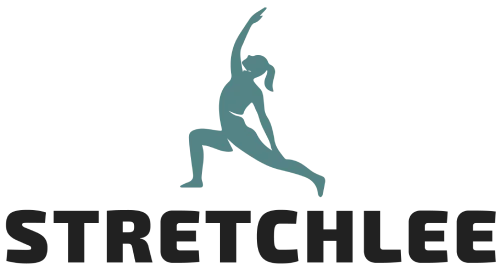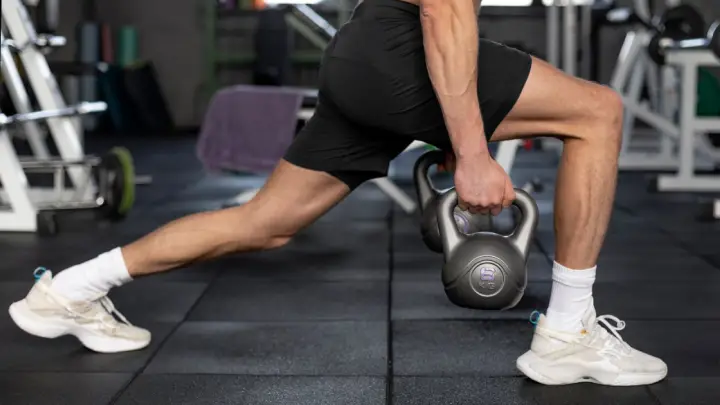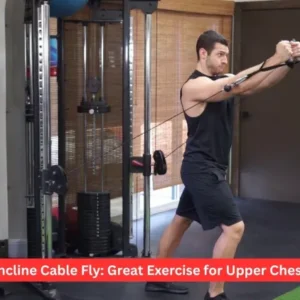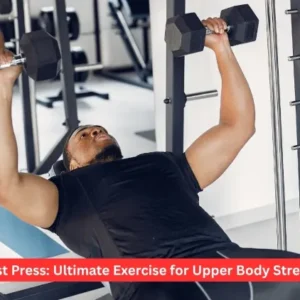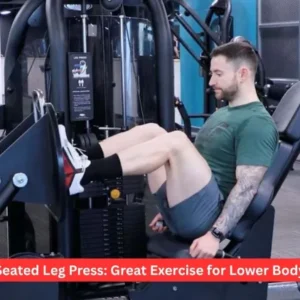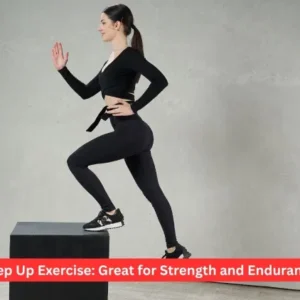Building strong, toned legs doesn’t require a gym full of machines. You can increase performance, enhance balance, and build muscle with just a pair of dumbbells. Leg Workouts with Dumbbells help you build muscle, improve speed, and tone your legs by targeting your quadriceps, hamstrings, glutes, and calves. As little as 30 minutes can be spent on training, and 6–7 leg day exercises are more than enough. To see improvements in strength, endurance, and muscle growth, concentrate on exercises like squats, lunges, and deadlifts, feed your body a healthy diet, and maintain consistency.
Why Choose Dumbbell Leg Workouts?
One of the best ways to increase strength and muscle without using bulky gym equipment is to work out your legs with dumbbells. You can easily complete a lower body routine at home or in a small space because dumbbells are portable and versatile. In addition to forcing stabilizer muscles to contract, which machines frequently fail to do, they permit natural movement patterns, which lowers the chance of injury.
Benefits include:
- Growth of muscles: Dumbbells give you enough resistance to cause hypertrophy, which makes your legs thicker and more powerful.
- Time efficiency: If you push yourself, a 30-minute leg workout with dumbbells can be sufficient.
- Balance development: Using free weights enhances core strength and coordination.
- Convenience: Ideal for home gyms, travel, and cramped areas.
- Hormonal boost: Using dumbbells to train the legs increases the production of growth hormone and testosterone, which promotes muscle growth in general.
If you’ve ever wondered if you can use dumbbells to build legs, the answer is yes. A lot of athletes and fitness enthusiasts have used dumbbell variations of traditional exercises to build strong, powerful lower bodies.
Best Leg Workouts with Dumbbells
Every routine should start with these fundamental movements. Performing 6–7 of these per session is ideal for a complete leg day.
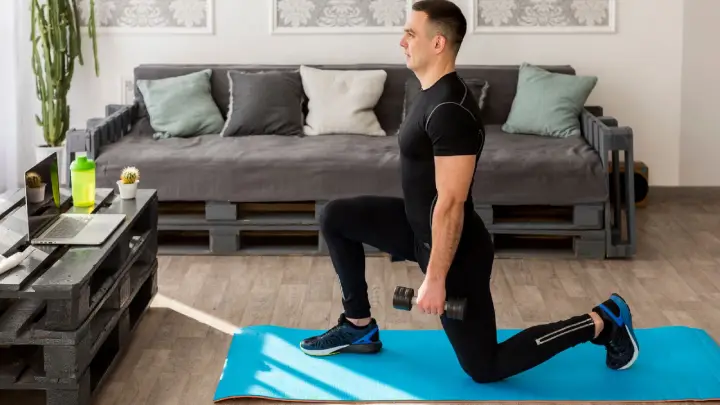
1. Squats with dumbbells
- Place a dumbbell on your shoulders or hold one in each hand.
- Maintaining a tall chest and knees over toes, lower yourself into a squat.
- Drive through your heels.
- Worked muscles included the quadriceps, glutes, hamstrings, and calves.
Because they work several muscle groups and have the greatest impact on strength and power, squats are frequently referred to as the “king of leg exercises.”
2. Lunges with dumbbells
- Hold dumbbells at your sides and stand tall.
- Lower yourself forward until both knees are 90 degrees bent.
- Repeat on the other leg after pushing back up.
The quadriceps, glutes, and hamstrings were used.
Since most people naturally have one leg stronger than the other, lunges help correct leg strength imbalances. They are great for leg aesthetics because they also help to shape the glutes and thighs.
3. Dumbbell Deadlifts
- Place dumbbells in front of your thighs.
- Lower yourself until your hamstrings start to stretch by hingeing at the hips.
- Return to standing after using your glutes.
Lower back, gluteal, and hamstring muscles were used.
Strengthening the posterior chain through deadlifts is essential for increasing explosive power and sprinting speed. Because stronger legs produce more force with each stride, you are almost always faster.
4. Dumbbell Step-Ups
- Put one foot on a stable surface, such as a bench.
- Bring your other foot up and take a step forward, pushing through the heel.
- Get down and do it again.
The quadriceps, glutes, and calves were used.
Step-ups develop functional strength by simulating real-life movement. They are helpful for fat loss because they efficiently burn calories.
5. Dumbbell Bulgarian Split Squat
- Take a seat on a bench one foot behind you.
- Holding dumbbells, lower your front leg into a squat.
- Maintaining an upright torso, push yourself back up.
The quadriceps, glutes, and hamstrings were used.
Due to its ability to isolate each leg, test balance, and provide enormous muscle-building potential, this is frequently regarded as one of the most difficult leg workouts with dumbbells.
6. Dumbbell Calf Raises
- Keep dumbbells by your sides.
- To stand on your toes, raise your heels.
- Reduce gradually.
Calves‘ muscles worked.
Although calves are among the most difficult leg muscles to develop, strength and shape can be enhanced with regular calf raises using increasing weight.
Sample Dumbbell Leg Workout Routine
Six to seven exercises per leg day are more than sufficient for a well-rounded workout. This is a well-organized plan:
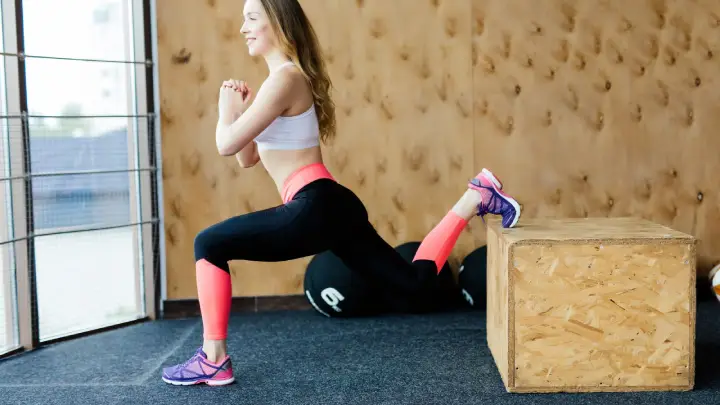
- Squats with dumbbells: 3 sets of 12 repetitions
- Three sets of ten repetitions per leg for lunges
- Deadlifts: three sets of twelve repetitions
- Three sets of ten reps per leg for step-ups
- Three sets of eight repetitions per leg for Bulgarian split squats
- Three sets of fifteen reps for calf raises
This workout is ideal if you only have 30 minutes; just cut down on rest intervals to 30 to 45 seconds to get the most out of it.
Tips for Maximizing Results
Increase the dumbbell weight gradually to achieve progressive overload. Beginners can use dumbbells weighing 10 to 20 pounds, but if you want to build muscle, try to use weights that will challenge you in 8 to 12 repetitions.
- Frequency of training: Strength training can be done once a week at a high intensity, but twice a week is best for growth.
- Consistency: Regular training for 8–12 weeks will change the shape of your legs.
- Variety: To avoid plateaus, switch up your workouts every four to six weeks.
- Rest and recuperation: It is not during exercise that muscles grow.
Nutrition for Leg Training
Properly fueling your body is just as crucial as working out.
- Eat complex carbohydrates an hour or so before working out, such as brown rice, oats, or one or two bananas.
- Serve with protein-rich foods like yogurt, eggs, or protein shakes.
- Unless you are accustomed to fasted workouts, avoid training entirely on an empty stomach.
After working out, replenish with a combination of carbohydrates and protein. A protein smoothie with fruit, eggs with whole-grain toast, or grilled chicken with rice are all excellent choices.
Nuts, legumes, lean meats, and healthy fats are foods that promote muscle growth and help build thicker legs.
Shaping and Growing Your Legs
It takes time and a combination of strength and endurance training to achieve perfectly shaped legs.
- For size, use moderate to heavy dumbbells and concentrate on lunges, Bulgarian split squats, and squats.
- For tone and shape, incorporate calf raises, step-ups, and walking 10,000 steps or more a day to build muscle and burn fat.
- Train your quadriceps, hamstrings, and calves in equal measure for symmetry.
- Increase your calorie intake, eat more protein, and regularly train your legs using progressive overload if you have skinny legs.
With the right diet and exercise, you can develop strong legs and thick thighs even if you’re naturally thin.
Additional Insights
Because they work the most muscle fibers, squats are frequently referred to as the “king of all exercises,” not just for leg training.
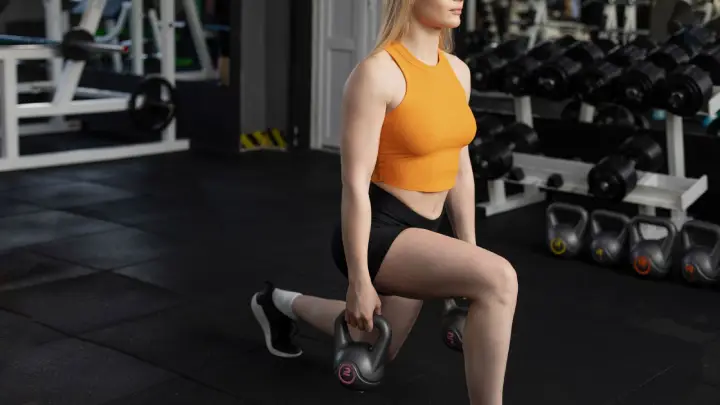
Although lunges are great, they should be used in conjunction with squats rather than in place of them.
While walking 10,000 steps a day can help tone legs, resistance training is still necessary for true muscle growth.
Leg days are notoriously difficult, and Bulgarian split squats are regarded by many lifters as the most dreaded yet successful exercise.
Stronger legs lower the chance of injury while also improving overall athleticism and speed.
Final Thoughts
Dumbbell leg exercises are strong, practical, and efficient. To develop strong, toned legs, all you need is dedication and the appropriate routine—no barbells or equipment. It is sufficient to train once or twice a week and perform six or seven good exercises to see noticeable results.
Maintain consistency, push yourself with increasing weights, and give your body the right kind of food. Dumbbells can help you reach all of your fitness objectives, including developing lean legs, thicker thighs, and improved athletic performance.
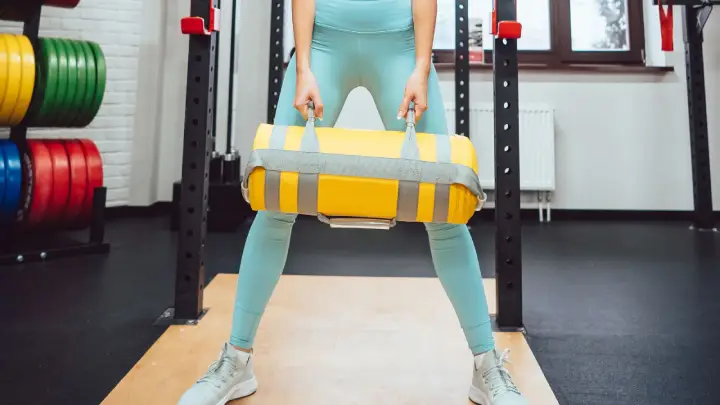
Ultimately, the most attractive leg shape is the one you achieve via diligence, balance, and hard work, so grab some dumbbells and get going.
Frequently Asked Questions
Can leg muscles be effectively built with dumbbell exercises?
Yes, when performed regularly with progressive overload, dumbbell leg workouts can increase strength, power, and shape.
How many dumbbell exercises should I perform on leg day?
For balanced growth, six to seven exercises per leg day are sufficient to target the quadriceps, hamstrings, glutes, and calves.
Does 30 minutes of leg training with dumbbells suffice?
Yes, if you push hard and use good form, a 30-minute dumbbell leg workout can increase your strength and endurance.
Before and after leg exercises with dumbbells, what should I eat?
For muscle growth and recovery, consume complex carbohydrates and lean protein before working out, and then refuel with these nutrients afterward.
